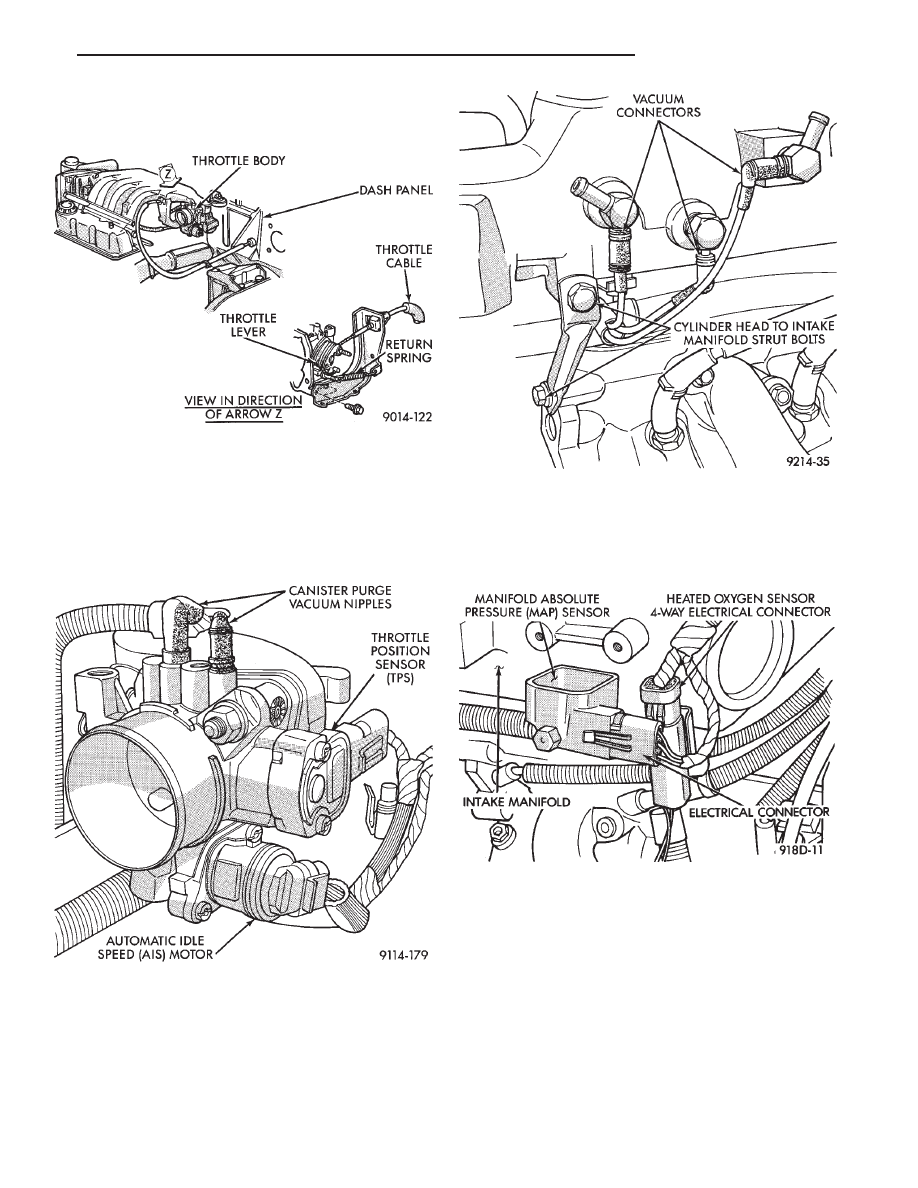Chrysler Town & Country/Voyager, Dodge Caravan, Plymouth Voyager. Manual - part 40

(4) Remove throttle cable (Fig. 6). Remove wiring
harness from throttle cable bracket and intake mani-
fold water tube.
(5) Disconnect automatic idles speed (AIS) motor
and throttle position sensor (TPS) electrical connectors
(Fig. 7). Refer to Automatic Idle Speed motor and
Throttle Position Sensor in this section.
(6) Remove vacuum hose harness from throttle body
(Fig. 7).
(7) Remove PCV and brake booster vacuum hoses
from air intake plenum.
(8) Remove vacuum harness connectors from intake
plenum (Fig. 8).
(9) Remove cylinder head to intake plenum strut
(Fig. 8).
(10) Disconnect electrical connectors from the MAP
sensor and heated oxygen sensor electrical connection.
Remove the engine mounted ground strap (Fig. 9).
(11) Remove the fuel hose quick connect fittings
from the chassis tubes. Refer to Fuel Hoses, Clamps
and Quick Connect Fittings in the Fuel Delivery
Section of this Group. Place a shop towel under the
connections to absorb any fuel spilled. fittings.
WARNING: WRAP A SHOP TOWEL AROUND HOSES
TO CATCH ANY GASOLINE SPILLAGE.
Fig. 6 Throttle Cable Attachment
Fig. 7 Electrical and Vacuum Connection to Throttle
Body
Fig. 8 Electrical and Vacuum Connections To Intake
Manifold
Fig. 9 MAP Sensor Electrical Connector
.
FUEL SYSTEM
14 - 107